#Jerry Hausner
Text
HATS! ~ Part 1
The Headwear of “I Love Lucy”

During the 1950′s hats were a standard wardrobe item for men and women. They combined form, function, and fashion. Here’s a look at some of the amazing hats that graced the heads of “I Love Lucy.”

Right from the start, Lucille Ball made hats comedy by wearing a lampshade on her head to transform herself into a Ziegfeld Girl. The same moment was later recreated on the series itself.
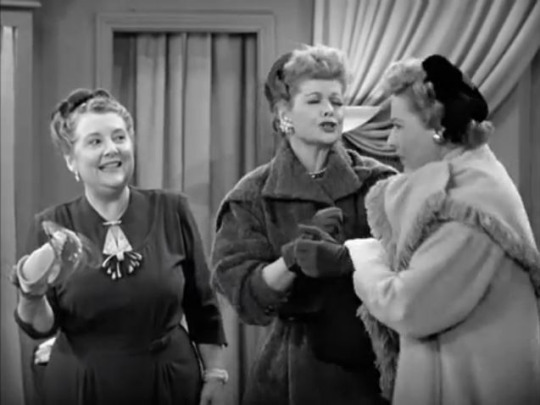
For Lucy, nothing was worth than shopping with no money to spend! Mrs. Mumford wasn’t shy about tempting Lucy into buying a new hat.
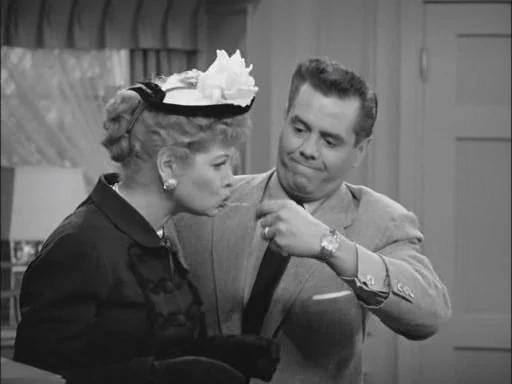
Lucy went to great lengths to conceal the price tag of her new hats from budget-conscious Ricky! Gulp!

When Lucy noticed Ricky wearing his hat to breakfast (to hide his receding hairline), she fought topper with topper!
LUCY: “It’s like having breakfast in a beanery!”


A good hat could be used time and again! This jacket was seen with and without its fur collar - from New York, to London, to Paris - fashion capitols of the world!
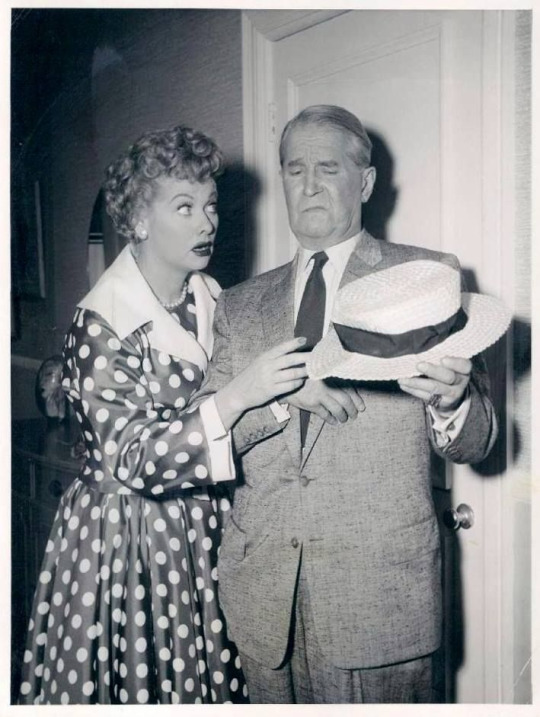
Lucy got comic mileage out of crushing a straw hat, as she did here with Maurice Chevalier, and earlier with Ricky’s Uncle Alberto in Cuba.

Sometimes a hat can be more than just a wardrobe item, but an important prop!
MY TOP TEN TOPPERS of I LOVE LUCY

#1 ~ HAT SALAD
When you just can’t make up your mind!

#2 ~ HEDDA HATS
Known for her elaborate hats, Hedda Hopper appeared with Lucy on several occasions.

#3 ~ SHOWGIRL ELEGANZA EXTRAVAGANZA
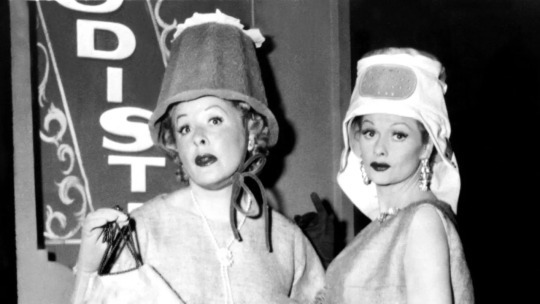

#4 ~ THE JACQUES MARCEL COLLECTION

#5 ~ THE BROOKLYN BEEKEEPER

#6 ~ THE TWENTY FIVE GALLON HAT
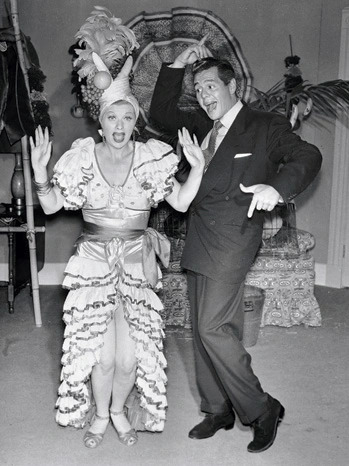
#7 ~ THE FRUIT BASKET

#8 ~ THE FUZZY FISHBOWL

#9 ~ THE INFLATABLE TOP HAT

#10 ~ EASTER BONNETS
HONORABLE MENTIONS (in no particular order)
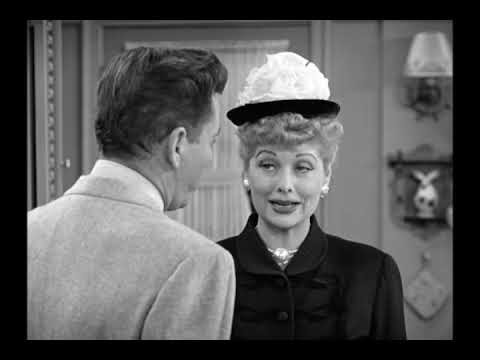
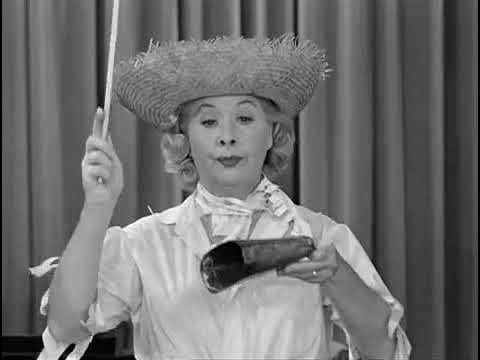








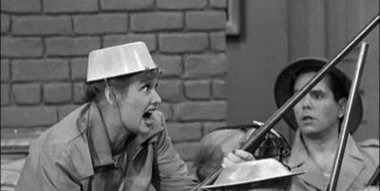
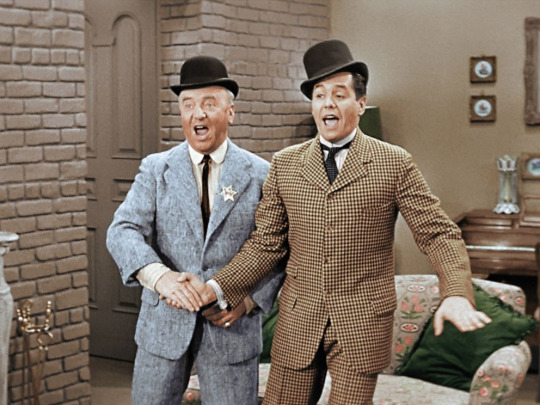
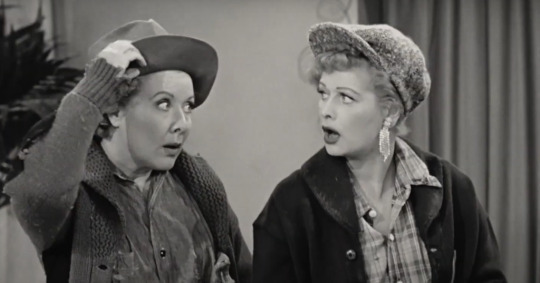
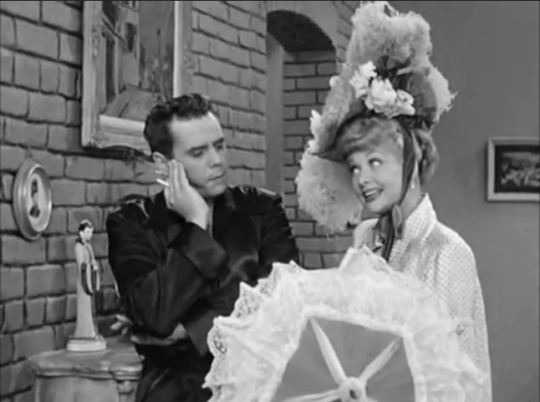





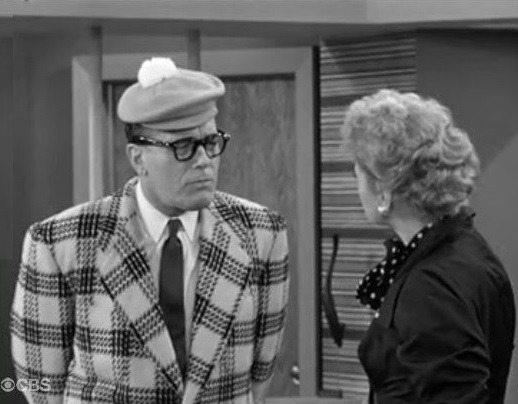

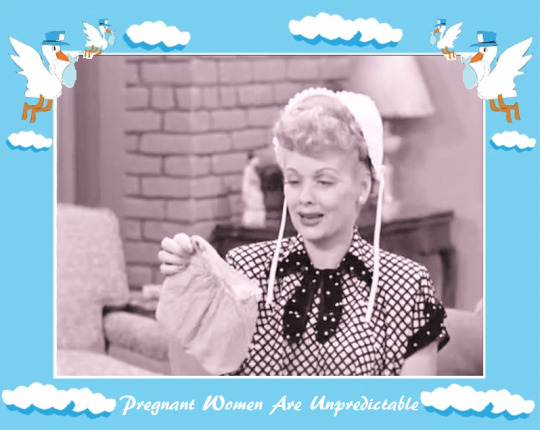
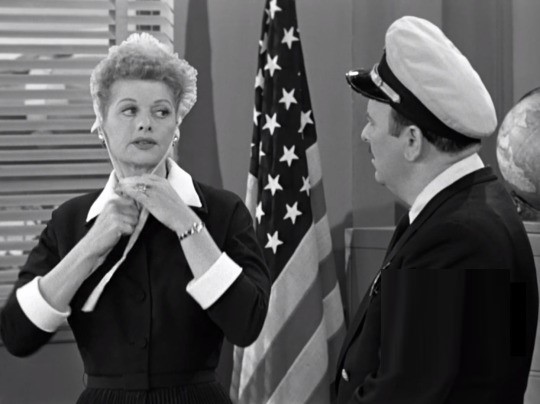

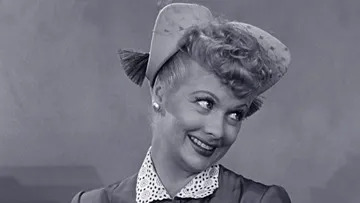

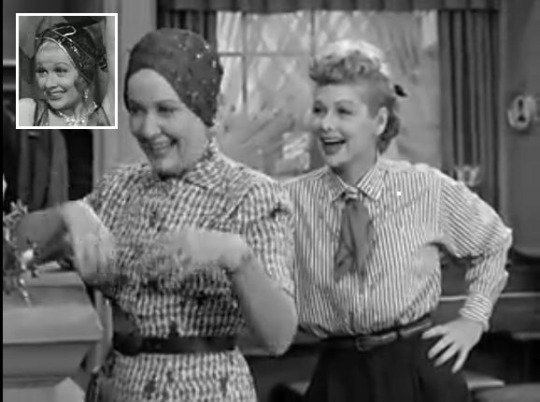

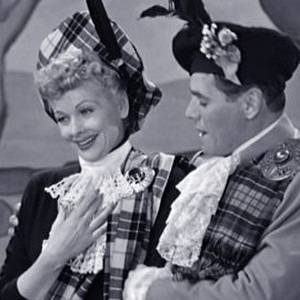






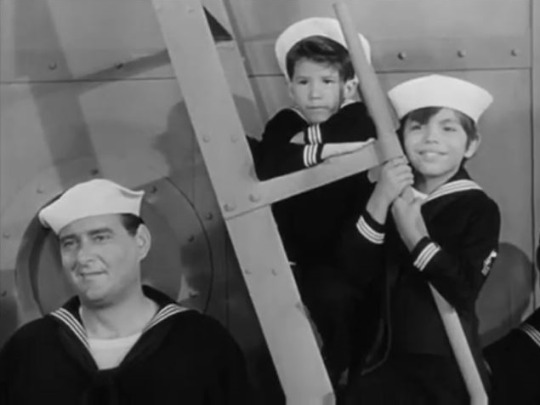
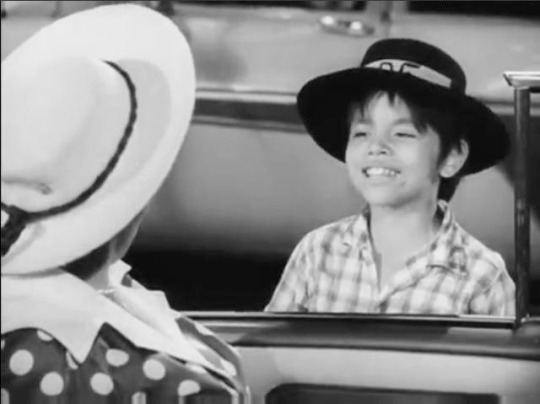





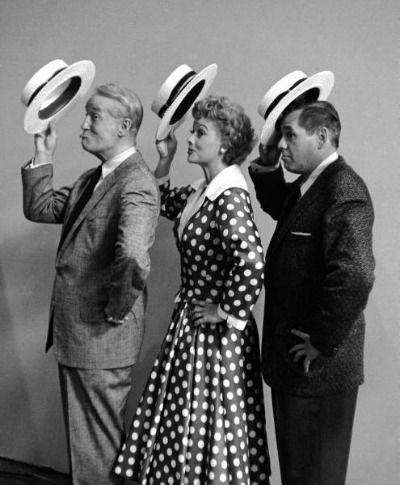






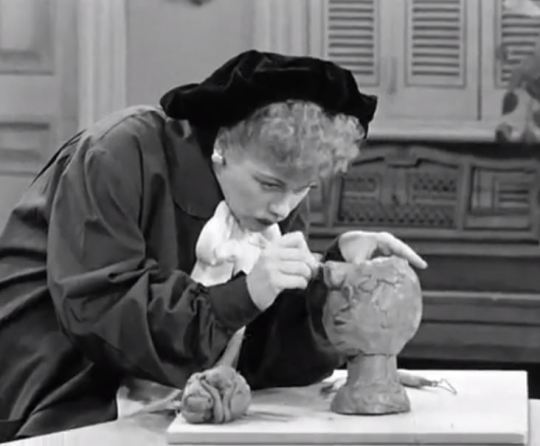





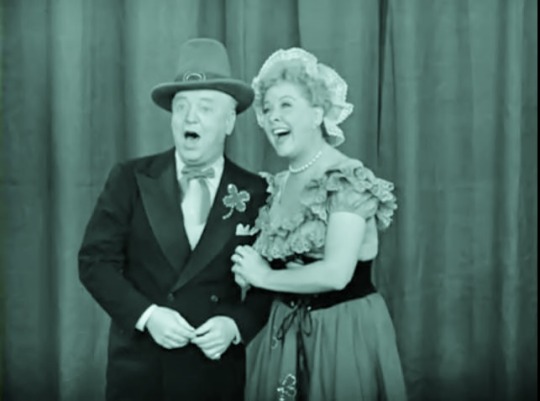


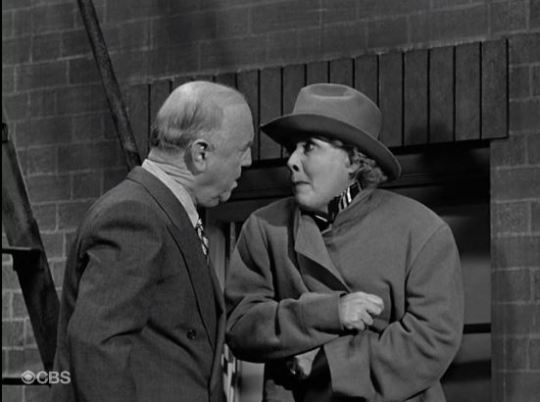
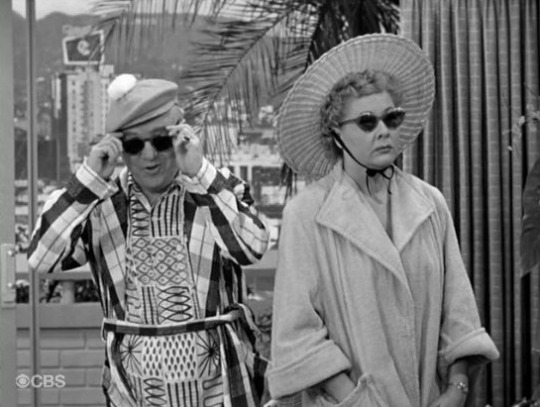



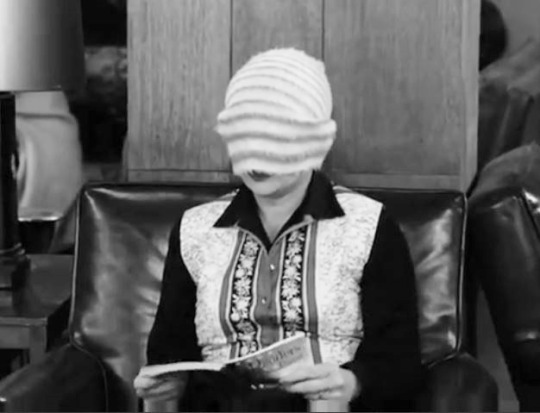
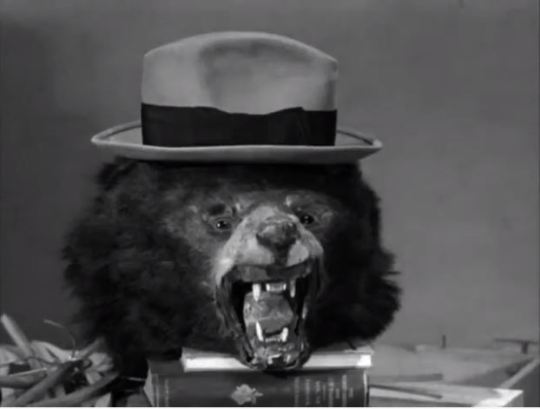
#I Love Lucy#Lucille Ball#Desi Arnaz#William Frawley#Vivian Vance#Richard Keith#hat#hats#maurice chevalier#elvia allman#Ernie Kovacs#Milton Berle#TV#CBS#Tennessee Ernie Ford#Barbara Pepper#Hazel Pierce#Angela Cartwright#Pepito Perez#Jerry Hausner#Frank Nelson#Kathryn Card#Phil Ober#Irving Bacon#Madge Blake#Hedda Hopper#Theresa Wright
16 notes
·
View notes
Text



1947.
The pay rates of the Meet Me at Parky's cast.
#frank nelson#otr#art gilmore#jerry hausner#harry einstein#sheldon leonard#elliott lewis#hy averback
4 notes
·
View notes
Text

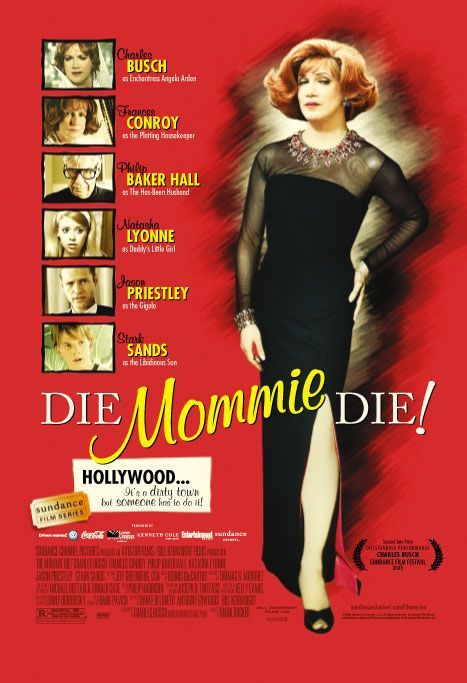

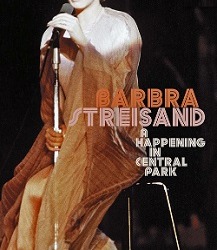
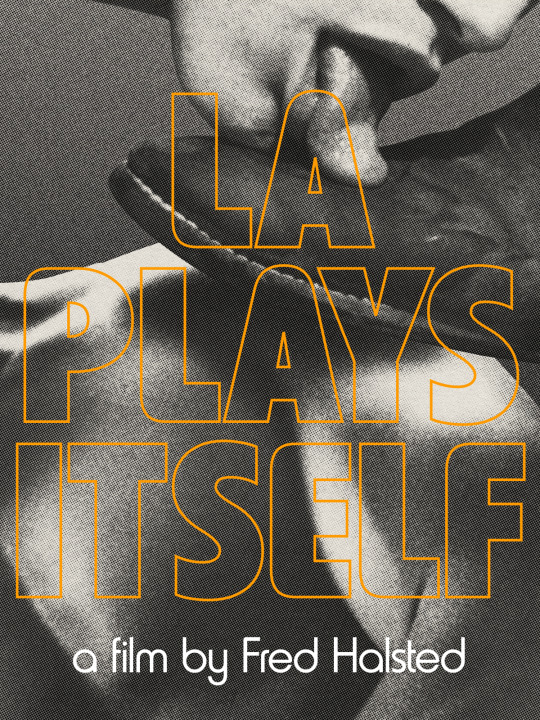
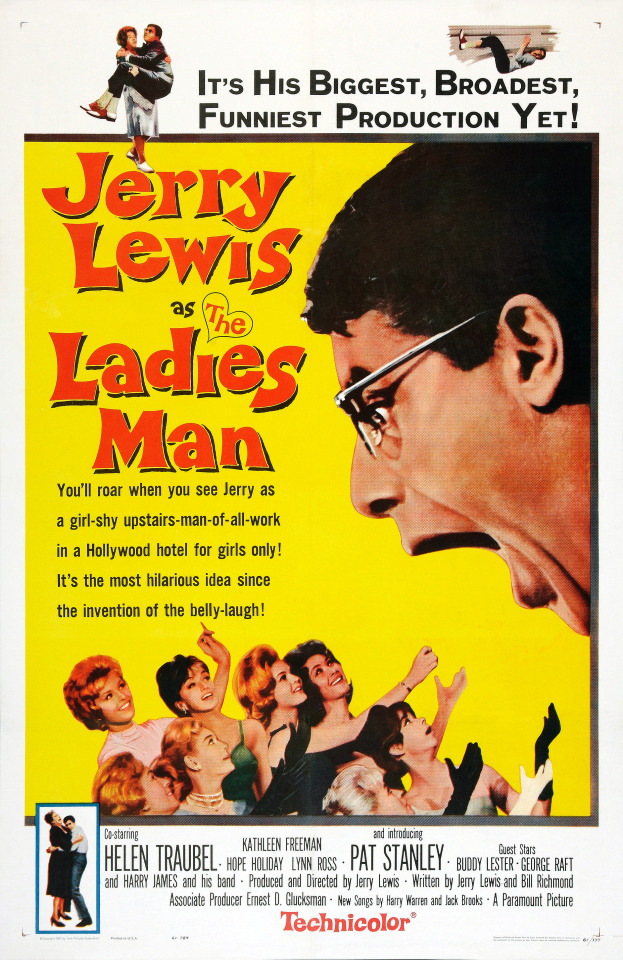

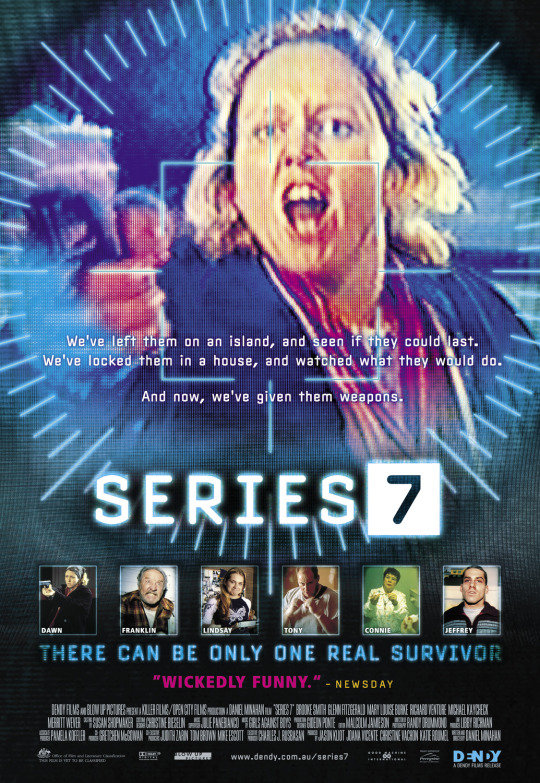
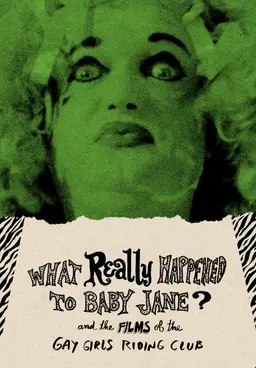
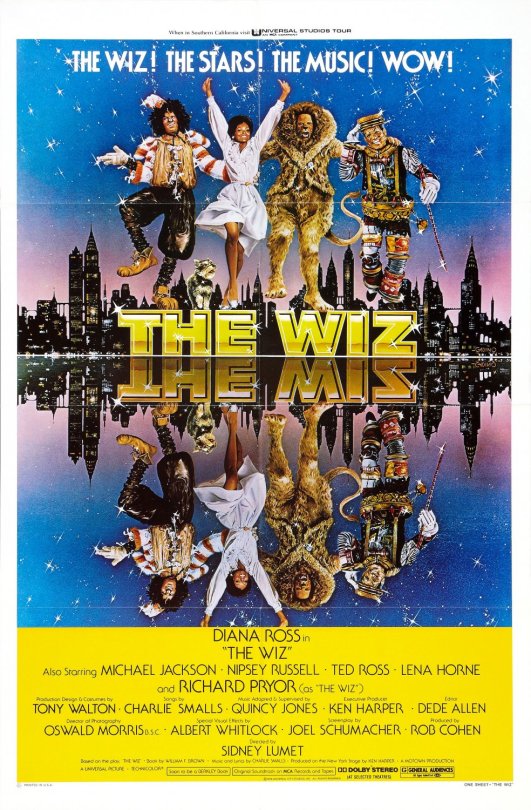
New To Me - 2023
All About Alice (1972, Ray Harrison)
Bambi (1942, David Hand)
Die, Mommie, Die! (2003, Mark Rucker)
Dreams (1990, Akira Kurosawa)
Elephant (1989, Alan Clarke)
Erin Brockovich (2000, Steven Soderbergh)
Glen or Glenda (1953, Edward D. Wood Jr.)
A Happening in Central Park (1968, Robert Scheerer)
In Vanda’s Room (2000, Pedro Costa)
LA Plays Itself (1972, Fred Halsted)
The Ladies Man (1961, Jerry Lewis)
Morvern Callar (2002, Lynne Ramsay)
News from Home (1976, Chantal Akerman)
A Self-Induced Hallucination (2018, Jane Schoenbrun)
Series 7: The Contenders (2001, Daniel Minahan)
Single White Female (1992, Barbet Schroeder)
Terminal USA (1993, Jon Moritsugu)
What Really Happened to Baby Jane (1963, Ray Harrison)
The Wiz (1978, Sidney Lumet)
Zero Day (2002, Ben Coccio)
+++
2LDK (2003, Yukihiko Tsutsumi)
AM1200 (2008, David Prior)
Another Gay Movie (2006, Todd Stephens)
Black Book (2006, Paul Verhoeven)
Bloodbath at the House of Death (1984, Ray Cameron)
Bloody Muscle Body Builder in Hell (1995, Shinichi Fukazawa)
Caniba (2017, Lucien Castaing-Taylor & Véréna Paravel)
Charade (1963, Stanley Donen)
Close Encounters of the Third Kind (1977, Steven Spielberg)
The Color Purple (1985, Steven Spielberg)
Crimes of Passion (1984, Ken Russell)
Death to Smoochy (2002, Danny DeVito)
The Faculty (1998, Robert Rodriguez)
Foxfur (2012, Damon Packard)
The Fluffer (2001, Richard Glatzer & Wash Westmoreland)
Freeway (1996, Matthew Bright)
Girls Will Be Girls (2003, Richard Day)
Hotel (2004, Jessica Hausner)
The Idiots (1998, Lars von Trier)
The Inheritance (2020, Ephraim Asili)
Lady Gaga and the Muppets Holiday Spectacular (2013, Gregg Gelfand)
Mod Fuck Explosion (1994, Jon Moritsugu)
Ned Rifle (2014, Hal Hartley)
Pee-wee’s Playhouse Christmas Special (1988, Paul Reubens & Wayne Orr)
R100 (2013, Hitoshi Matsumoto)
The Salt Mines [1990] & The Transformation [1996] (Susana Aikin & Carlos Aparicio)
Seconds (1966, John Frankenheimer)
Sextool (1975, Fred Halsted)
Sibyl (2019, Justine Triet)
Spirited Away (2001, Hayao Miyazaki)
Star 80 (1983, Bob Fosse)
Strange Days (1995, Kathryn Bigelow)
Teknolust (2002, Lynn Hershman-Leeson)
Theorem (1968, Pier Paolo Pasolini)
18 notes
·
View notes
Text

Ida Lupino directing her sister Rita Lupino and Jerry Hausner in OUTRAGE (1950)
10 notes
·
View notes
Photo

Kirk Douglas and Adolphe Menjou in Paths of Glory (Stanley Kubrick, 1957)
Cast: Kirk Douglas, Ralph Meeker, Adolphe Menjou, George Macready, Wayne Morris, Richard Anderson, Christiane Kubrick, Jerry Hausner, Peter Capell, Emile Meyer, Bert Freed, Kem Dibbs, Timothy Carey, Fred Bell, John Stein, Harold Benedict. Screenplay: Stanley Kubrick, Calder Willingham, Jim Thompson, based on a novel by Humphrey Cobb. Cinematography: Georg Krause. Art direction: Ludwig Reiber. Film editing: Eva Kroll. Music: Gerald Fried.
Kirk Douglas gives an uncharacteristically restrained performance in Paths of Glory, but the real star of the film is director Stanley Kubrick, who lends the big battle scene a kind of choreographed intensity. Kubrick had begun his career as a photographer for Look magazine and had been his own cinematographer on his early short films and his features Fear and Desire (1953) and Killer's Kiss (1955). Although the cinematographer for Paths of Glory is Georg Krause, it's easy to sense Kubrick's direction as he anticipates the battle scene's relentless motion with long takes and tracking shots in the earlier parts of the film, when the camera observes Gen. Broulard (Adolphe Menjou) persuading Gen. Mireau (George Macready) to commit his troops to the suicidal assault on the German-held "Ant Hill." We follow Broulard and Mireau as they move through the opulent French headquarters (actually the Schleissheim Palace in Bavaria), circling each other as Broulard plays on Mireau's ambition and overcomes his resistance, Then we move to the trenches, a sharp contrast in setting from the palace, where the camera tracks Mireau as he walks down the long narrow ditch, greeting soldiers in a stiff, formulaic way and berating one who is stupefied by shell shock as a coward. The tracking shot of Mireau's tour of the trenches is then repeated with Col. Dax (Douglas) in the moments before the suicidal assault on the Ant Hill, although this time the air is full of smoke and debris from the shelling. Then Dax goes over the top, blowing a shrill whistle to lead his troops, and we have long lateral tracks punctuated by explosions and falling men. Film editor Eva Kroll's work adds to the power of the sequence. If the acting and the screenplay were as convincing as the camerawork, Paths of Glory might qualify as the masterpiece that some think it is. Douglas, Menjou, and Macready are fine, and Wayne Morris and Ralph Meeker have a good scene together as members of a scouting party on the night before the battle, in which the drunkenness and cowardice of Morris's character has fatal consequences. But the scenes in which the three soldiers court-martialed for the failure of the assault face the prospect of the firing squad go on much too long, and are marred by the overacting of Timothy Carey as the "socially undesirable" Private Ferol and the miscasting of Emile Meyer, who usually played heavies, as Father Dupree. (Carey was actually fired from the film, and a double was used for some scenes.) And the film ends with a mawkish and unconvincing scene in which a captured German girl (the director's wife-to-be, Christiane Kubrick) reduces the French troops to tears with a folk song. Paths of Glory has to be described as a flawed classic.
1 note
·
View note
Text

𝒪𝓁𝒹𝒾𝑒 𝒷𝓊𝓉 𝑔𝑜𝑜𝒹𝒾𝑒...
#Paths of Glory (1957)#War/Drama#Kirk Douglas ✝︎#George Macready ✝︎#Adolphe Menjou ✝︎#Ralph Meeker ✝︎#Wayne Morris ✝︎#Richard Anderson ✝︎#Joe Turkel#Bert Freed ✝︎#Peter Capell ✝︎#Jerry Hausner ✝︎#Emile Meyer ✝︎#Kem Dibbs ✝︎#Paul Bös ✝︎#Herb Ellis ✝︎#Timothy Carey ✝︎
2 notes
·
View notes
Text
Never Fear
BBB.5 (out of 5) Ida Lupino began her directorial career with this sensitive portrayal of a dancer dealing with the personal setback of illness. While enjoying a successful partnership with Keefe Brasselle, both in dance and as lovers, Sally Forrest becomes unwell and, while in hospital, learns that she has polio. She is sent to a rehabilitation centre (which Lupino films on location), at first…
View On WordPress
#Archie Stout#Collier Young#Eve Miller#Harvey Manger#Herbert Butterfield#Hugh O&039;Brian#Ida Lupino#Jerry Hausner#John Franco#Keefe Brasselle#Kevin O&039;Morrison#Lawrence Dobkin#Leith Stevens#Margaret Greenway#Reta Dawson#Rita Lupino#Sally Forrest#Stanley Waxman#Van Nest Polglase#William H. Ziegler
0 notes
Photo
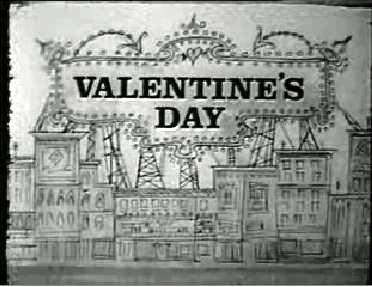
Passages - Valentine’s Day
Anthony Franciosa (October 25, 1928 – January 19, 2006)
Jack Soo (October 28, 1917 – January 11, 1979)
Janet Waldo (February 4, 1919 – June 12, 2016)
Jerry Hausner (May 5, 1909 – April 1, 1993)
Eddie Quillan (March 31, 1907 – July 19, 1990)
Mimi Dillard (December 15, 1934 – August 22, 2008)
0 notes
Video
1995 Bluegrass Nationals Karate Tournament Forms and Weapons Highlights
You can buy the entire 1995 Bluegrass Tournament DVD here: https://www.ebay.com/itm/282687867586
There are highlights from the Eliminations in the Forms and Weapons and Fighting divisions.
Night time finals 9-10 yr boys fighting Dallas Crawford vs Richard Stone, 8-9 yr boys Brian Gallagher vs Jonathan Hillman, 11-12 yr boys Ahmed Fatimi vs Aaron Carter, Senior Women fighting Tina Taylor vs Nina Ortiz, Women Lightweight Jennifer Yanoff vs Sue Brazelton, 15-17 yr boys Jason Tankson vs Hector Santiago, Jr., Youth Weapons Jennifer Santiago, Ashley Lane, Jimmy Pham, Gaspar Catanzaro Adult Weapons Richard Branden, Mike Chat, Michelle Boutin, Men Semi Fight Larry Tankson vs Anthony Price, Men Lightweight Tony Young vs Pedro Xavier, Men Heavy Mafia Holloway vs Jerry Roberts, Men Senior Anthony Price vs James Hobby, Youth Forms Jimmy Pham, Meadow Maze, Kinston Ng, Jennifer Santiago, Butch Marks, Jeff Ikejiri, Guy Burkett, Jonathan Hillman, Stefanie Flowers, Jeff Doss Women’s Forms Michelle Boutin, Mia Mawaku, Kellie Hausner, Suzann Wancket Men’s Forms Steve Torres, Richard Branden, Gabe Reynaga, Carmichael Simon, Mike Chat, Jon Valera Men’s Final Omar Olumee vs Anthony Price, Women’s Final fight Jennifer Yanoff vs Nina Ortiz, Men’s Overall Fight Mafia Holloway vs Anthony Price, Team Fight Team Olympic vs Bronx Pathways
0 notes
Photo

The Ragtime Bear (1949)
In the first cartoon with Mister Magoo, a bear swaps places with Waldo (Jerry Hausner), the nephew of Magoo (Jim Backus), during a trip to the Hodge Podge Lodge. Of course, the nearsighted old man can’t tell the difference between the two.
Watch it here.
#1949#animated debuts#cartoons#jerry hausner#jim backus#mister magoo#united productions of america (upa)#video#waldo#yt screencap
0 notes
Text
THE NAME IS FAMILIAR... BUT I CAN'T PLACE THE FACE!
Same Character / Different Actor

Sometimes circumstances require the recasting of a role on a long-running television show. Unlike soap operas - which often use a voice over to announce that a role has been recast - the change is hardly ever acknowledged on sitcoms. Did recasting happen in the Lucyverse? Yes - but not quite as prominently as on, say, "Bewitched". But more on that later.
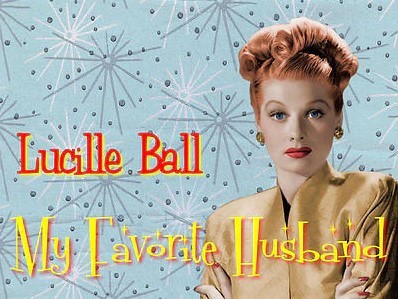
Let's start with radio, where it was far easier to replace actors, often without the listener even noticing. On the pilot episode of Lucille Ball's radio sitcom "My Favorite Husband" (1948-1951) her spouse George was played by Lee Bowman. When the show was picked up as a weekly series, Bowman was not available, so the role went to Richard Denning.
George's boss Mr. Atterbury was famously played by Gale Gordon, but before the boss became a regular character, the recurring role was played by Hans Conried and Joseph Kearns. All three actors would later be seen on "I Love Lucy."
Liz's mother-in-law Mrs. Cooper was first played by Bea Benadaret, but when she assumed the regular role of Iris Atterbury, Mrs. Cooper was voiced by Eleanor Audley. Both women were featured on "I Love Lucy."
Minor characters Corey Cartwright and Marge Van Tassel were first played by Hal March and Frances Chaney. March was replaced by John Heistand, but the role was quickly written out. Elvia Allman turned up as Marge when the character re-surfaced in a second appearance. March and Allman were both seen on "I Love Lucy."

Viewers probably didn't realize it, but many different actors actually played the role of Ricky Ricardo Jr. aka Little Ricky. Even more surprising, considering that his birth date coincided with that of the Arnaz's real-life son, none of them were Desi Arnaz Jr. The practical and legal matters of having a child on a film set necessitated that the role be played by twins. There were also two 'dream' Little Rickys, bumping the total number of actors to eight!
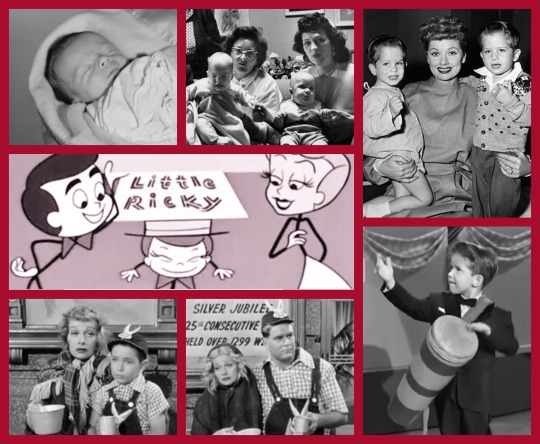
JAMES JOHN GANZER (newborn) ~ insert shots of the baby were used in "Lucy Goes to the Hospital" (1953) and the flashback opening of “The Club Election” likely taken from this same shoot. He was five days old at the time. The above closeup was shot before the episode was filmed and pictures were projected for the studio audience to see.
THE SIMMONS TWINS (infants) ~ Richard and Ronald Lee Simmons played the role in just two episodes: "No Children Allowed" and "The Indian Show", both in 1953.
THE MAYER TWINS (toddlers) ~ Michael and Joseph Mayer alternated in 11 episodes from November 1953 to April 1956. Although they looked nearly identical, the pair reportedly had very different personalities.
DREAM LITTLE RICKYS ~ Two uncredited actors (one young and small, the other older and large) were featured during Lucy's dream about "Ricky's Old Girlfriend" (1953). Although the younger performer looks a great deal like Jerry Mathers ("Leave it to Beaver"), Mathers denies ever appearing on "I Love Lucy." Since the dream has no dialogue, a bunny-themed outfit is used to indicate to viewers that the three actors are the same character.
KEITH THIBODEAUX aka RICHARD KEITH (adolescent) ~ The character was quickly aged during season six, necessitating an actor capable of handling dialogue and with some musical ability. Louisiana-born Keith Thibodeaux was favored by Desi for his drum skills, but Lucy needed some convincing. Desi simplified Keith's professional name, although it was never seen on screen. He played the role for 15 episodes as well as in 12 out of 13 "Lucy-Desi Comedy Hours" (1957-1960).
For what it's worth - two more actors provided the off-screen crying of Little Ricky: Pepito Perez and Jerry Hausner, both of whom also appeared on screen as other characters. Which brings us to our first adult cast switch...
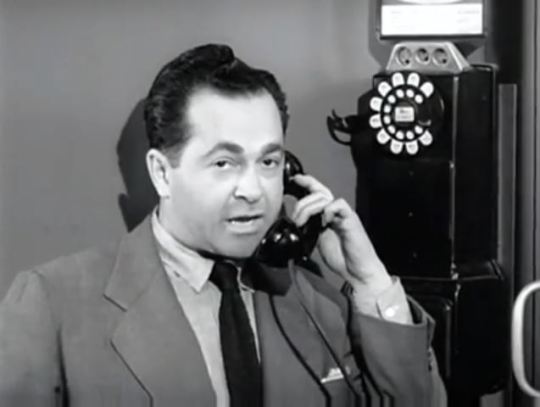
The role of Jerry, Ricky's agent, was the only character outside of Lucy and Ricky to be carried over from the unaired pilot. Jerry was played by Jerry Hausner (hence the name), who had been heard on "My Favorite Husband." He was intended to be a series regular on "I Love Lucy", but when landlords Fred and Ethel Mertz were added to the series, his role was scaled back. Jerry the Agent would appear in 8 episodes, all during the first 3 seasons of the series.
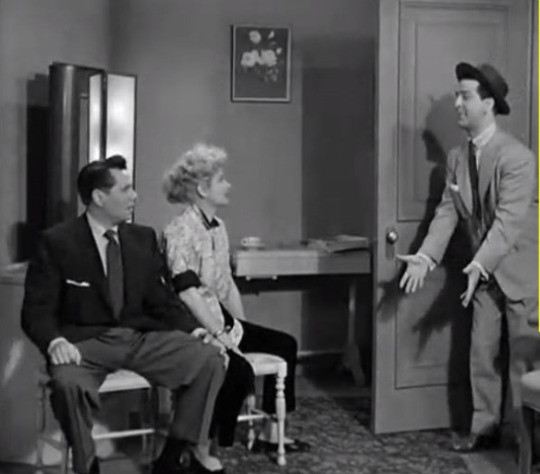
Inexplicably (perhaps due to illness) in “The Handcuffs” (1952), Jerry the Agent is not played by Hausner but by Paul Dubov. Two months later, Hausner returned to the role that he originated. During the filming of “Fan Magazine Interview” (1954), Hausner and Desi Arnaz got into a heated argument on the set. Hausner claimed that he was not able to hear his cues during a telephone scene where he was located across the soundstage from Desi. He quit the show and never appeared on the series again. But things were eventually patched up and he did appear on "The Lucy Show."

Charlie Appleby was originally played by Hy Averback (inset) in "Baby Pictures" (1953). The next time viewers saw him - in "Lucy and Superman" (1956) - he was played by George O'Hanlon. Averback returned to the show to play another Charlie, Charlie Pomerantz, in “The Hedda Hopper Story” (1955). Confused? Not half as much as poor Caroline (Doris Singleton)! Whichever actor played him, they were both proud of their son, Little Stevie. But which Stevie?
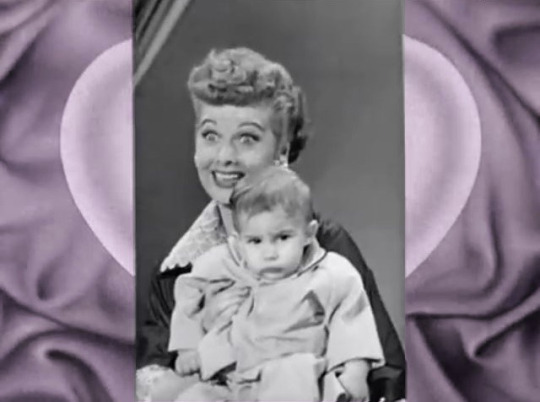
The first time we see Little Stevie (a name suspiciously sounding like Little Ricky) he is played by an uncredited infant in "Baby Pictures" (1953), the same episode where his dad is played by Hy Averback. The infant had just gotten over the measles. Ricky and Stevie are both said to be 13 months old.
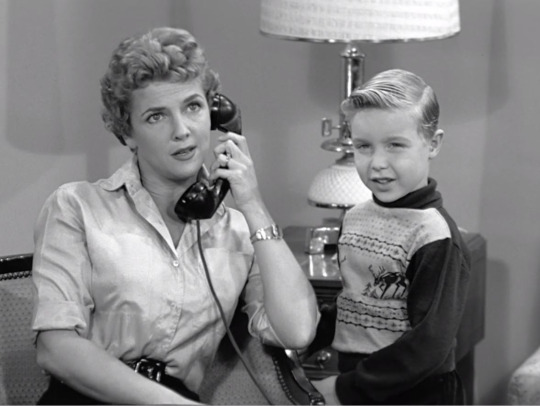
The next time we see Stevie he is played by Steven Kay in "Lucy and Superman" (1956), the same episode that switched his dad to George O'Hanlon. Although Kaye’s first name was also Stevie (in a show where Lucy played Lucy), the character was created three years earlier. The question is - if Little Ricky has a father named Ricky - why does Little Stevie have a father named Charlie? The previous year Kaye had played Jordan Benedict III (age 4) in the film Giant. In the above screen shot with his screen mom Doris Singleton he is caught breaking the cardinal rule - looking into the camera! Didn’t he learn anything working with James Dean?
Marion Strong was one of Lucy and Ethel's friends and a member of the Wednesday Afternoon Fine Arts League. The character's name is the same as one of Lucille Ball's Jamestown friends. We meet Marion during "The Club Election" (1953) in the person of Margie Liszt. Liszt may also have been playing Marion in "No Children Allowed" (1952), although none of the bridge players are called by name. In her first appearance on the series ("Redecorating" in 1952), she played Agnes, a gossipy woman on a telephone party line.
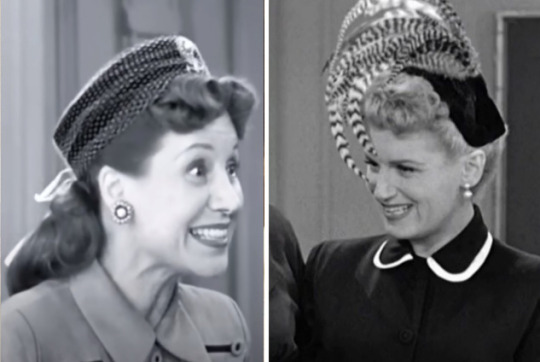
The next time we see Marion she is played by Shirley Mitchell in 3 episodes from season three. Mitchell became friends with Lucille Ball in the late 1940s when she was featured in 4 episodes of “My Favorite Husband.”

In the same episode that we got Strong, we also got Grace! Grace Munson was yet another character that was named after one of Lucille Ball's hometown friends. In "The Club Election" Grace is embodied by Hazel Pierce, who was also Lucille Ball's camera and lighting stand-in. She was first pick when small roles and background assignments were doled out.
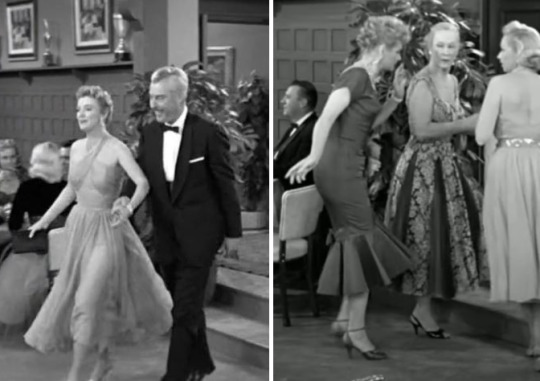
The next time we see Grace, she has moved to Westport with her husband Harry (Tristam Coffin), inspiring Lucy and Ricky to do the same. This time, nearly five years later, Grace is played by Ruth Brady. The Munsons have a son named Billy (who stays off-screen) and a cousin named Diana Jordan played by a pre-Jeannie Barbara Eden. Brady was featured as Laura in Lucy and Desi's 1956 film Forever, Darling and likely made such a positive impression that she was rewarded with Grace. Literally. At the Westport Country Club things get surreal when Hazel Pierce, who originated the role of Grace, also shows up!
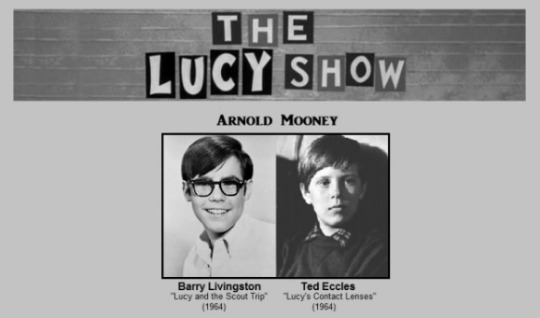
On "The Lucy Show" there were far fewer examples of recasting. The role of Arnold Mooney, Mr. Mooney's youngest son, was first played by Barry Livingston in “Lucy Gets Locked in the Vault” (1963), the same episode that also introduced Gale Gordon as banker Theodore J. Mooney. Livingston returned to the role in “Lucy and the Scout Trip” (1964). Not even a year later, Arnold is being played by Ted Eccles in "Lucy's Contact Lenses." Apparently, Livingston's schedule playing Chip on "My Three Sons" (also filmed on the Desilu lot) became too much for him to do double duty. When the series location moved from Danfield to Los Angeles, Eccles appeared as two other characters, one of them in a scene with Gale Gordon, who formerly played his father! More surreal still, the new character's name was Barry.

Another early recast was the role of Dorothy Boyer, Danfield volunteer firefighter. The part was originally given to Ruth Crews. The character is never called by name, but she is one of the few firefighters to speak distinct dialogue.

The next time we hear about Dorothy she is played by Dorothy Konrad, probably because the character now needed to be able to sing four part harmony in "Lucy's Barbershop Quartet". Both performers were sturdily built women. Crews, meanwhile, turned up as an unnamed patron at Wilbur's Ice Cream Parlor when "Lucy is a Soda Jerk" (1963). Like Little Stevie, it is odd that Konrad's first name matches her character's, despite them being originated by other performers!
I SAW THAT FACE ON...
Probably the most famous example of recasting on a sitcom is the role of Darrin Stevens on ABC's long-running "Bewitched" (1964-1972). The part was originated by Dick York, but he became ill and was replaced by similar-looking Dick Sargent for the rest of the series.

On New Year’s Eve 1973, Dick Sargent was seen as a policeman on “Here’s Lucy”, his only time acting opposite Lucille Ball.
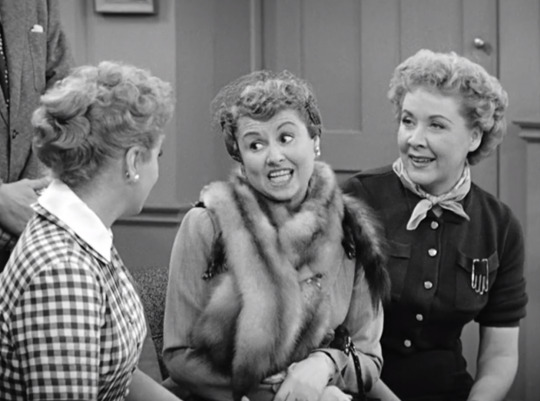
On the same series, Darrin's nosy neighbor Gladys Kravitz was originated by Alice Pearce. When she died in 1966, Sandra Gould took over the role. On "I Love Lucy" Gould played Texan Nancy Johnson in “Oil Wells (1957) and made a brief appearance as a subway strap-hanger in “Lucy and the Loving Cup” (1953). In 1962 she appeared on “The Lucy Show” as a bank secretary.
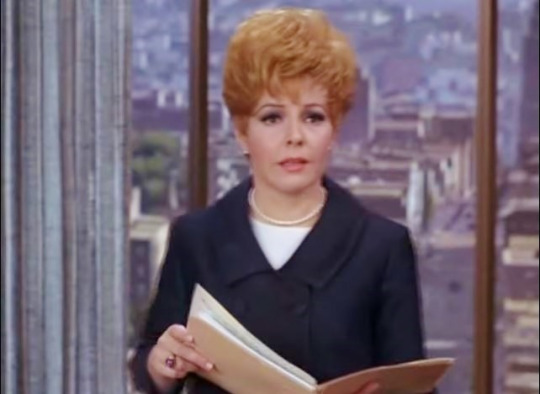
As if that wasn't confusing enough, Darrin's boss's wife Louise Tate was played by Irene Vernon, then Kasey Rogers. In 1967 Rogers was seen in a two-part airline-themed "Lucy Show" starring Carol Burnett. She also played a music publisher's secretary (above) in "Lucy and Phil Harris" (1968).
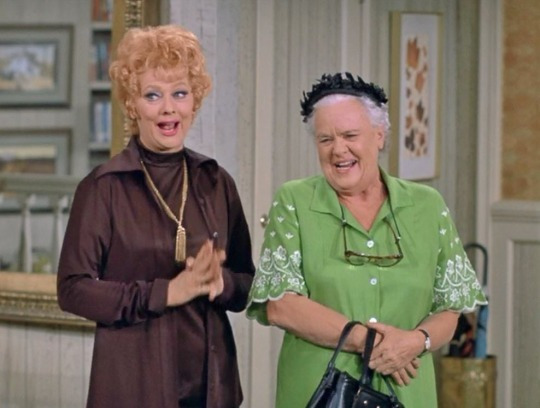
The character of Aunt Hagatha was only seen in eight episodes of "Bewitched," yet it was played by five different actors:
Nancy Andrews (1967)
Diana Chesney (1965)
Doreen McLean (1969)
Kay Elliot (1970)
Ysabel MacCloskey (1971)
and Reta Shaw (1966 & 1971)
Shaw is probably the most recognizable Hagatha as she originated the role and was the last to play it. She was a popular character actress from film (Mary Poppins), stage (The Pajama Game), and television ("The Ghost and Mrs. Muir"). Shaw was seen as 3 different characters on "The Lucy Show" and 3 more on "Here's Lucy."

When "The Munsters" premiered in 1964, the role of Marilyn Munster was played by Beverly Owen. After one season, Owen decided not to return to the series, and was replaced by Pat Priest. Few viewers could tell the difference as they both were intentionally made to look like Marilyn Monroe. In October 1966, Priest played a flight attendant on "The Lucy Show."

On Desi Arnaz's sitcom "The Mothers-in-Law" (1967-1969), Roger C. Carmel played Roger Buell during season one. But during a contract dispute Desi was dared to recast - and he did! Carmel was replaced with Richard Deacon for the show's second (and last) season. Deacon was no stranger to Desi, having played Tallulah Bankhead's chauffeur in "The Celebrity Next Door" (1957), an episode of "The Lucy-Desi Comedy Hour", as well as many other Desilu shows. Deacon later went on to do two episodes of "Here's Lucy."
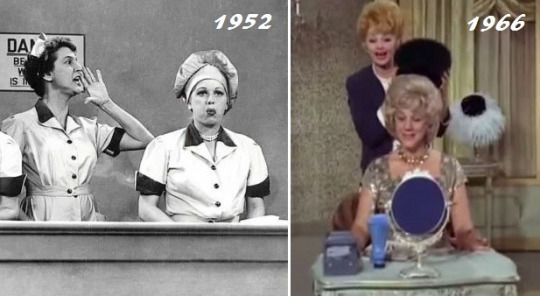
On CBS's "Petticoat Junction" (1963-1970) the recurring character of Selma Plout was originated by Susan Walther (aka Susan Johann). She played the role for 5 episodes until she was mysteriously replaced by Elvia Allman, who played Selma for the rest of the series. Allman started acting with Lucille Ball on radio, and was famously seen as the barking candy factory foreperson on "I Love Lucy." She returned to play Minnie Finch’s neighbor in “Fan Magazine Interview” and magazine reporter Nancy Graham in “The Homecoming.” She made 2 appearances on “The Lucy–Desi Comedy Hour“ and 2 more on “The Lucy Show."
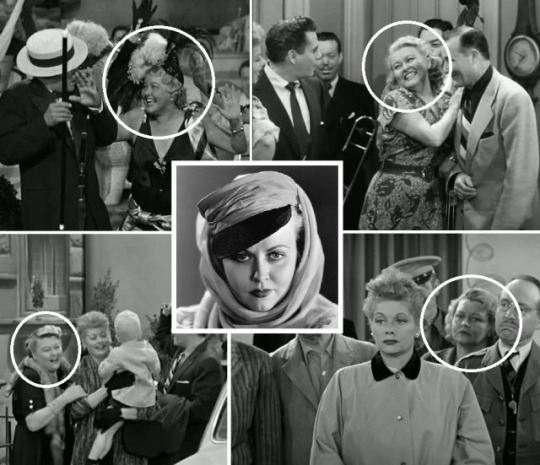
Doris Ziffel (mother of Arnold the Piggy) was a character that was seen on both "Petticoat Junction" and "Green Acres." The part was originated by Lucille Ball's friend Barbara Pepper. After doing films together at RKO, Pepper was on the short list to play Ethel Mertz on "I Love Lucy." When she didn't get the part, Lucy cast her in a variety of small roles on the series. When Pepper died in 1969, Fran Ryan assumed the role. Ryan had already been seen on the series as Minnie Holcombe in March 1969, just a few months earlier, so viewers could be excused for doing a double-take.

On Eve Arden's "Our Miss Brooks" (1952-1956), filmed at Desilu, the role of Mrs. Martha Conklin was first played by Virginia Gordon, Gale Gordon's real-life wife. She had originated the role on radio. Starting in season two, Paula Winslowe took over playing the part. In 1964, Winslowe appeared briefly on "The Lucy Show" as a hospital patient.

In Mayberry, "The Andy Griffith Show" (filmed on the Desilu backlot) had several casting swaps. Miser Ben Weaver was first played by Will Wright (top), but then by Tol Avery (bottom) and later Jason Johnson. Wright played two roles on "I Love Lucy" and Avery played characters on "The Lucy Show and "Here's Lucy".

Mayberry gas pumper Wally was first played by Norman Leavitt (left), then by Trevor Bardette and Cliff Norton (right). Coincidentally, Leavitt also played a filling station attendant in "Lucy Hunts Uranium" (1959), as well as being seen in several other Desilu projects. On "Here's Lucy" Cliff Norton played Sam the plumber when "Lucy Meets the Burtons" and also played "Mary Jane's Boyfriend" Walter. Speaking of which...

The TV pilot of "Gilligan's Island" featured John Gabriel as The Professor. When the sitcom went to series, he was replaced by Russell Johnson. Gabriel (above) later played Jack Thomas in "Mary Jane's Boyfriend" (1974).
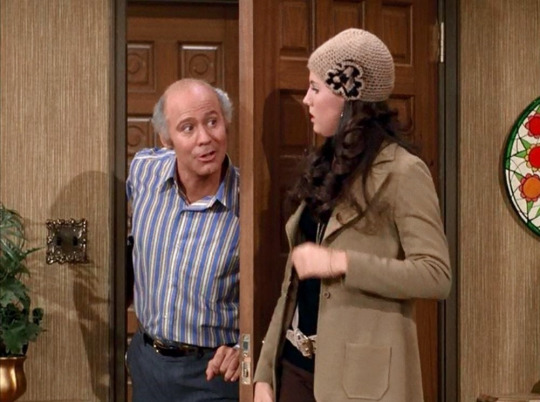
On "Happy Days" (1974-1984), Ralph's father Dr. Mickey Malph was first played by Allen Oppenheimer, but after an extended absence, returned as Jack Dodson. Oppenheimer had a couple of roles on "Here's Lucy," most notably as Kim's Uncle Herb in an episode that was a back-door pilot for a spin-off that would have starred Lucie Arnaz.
Other noteworthy re-castings that did not touch the Lucyverse include the roles of Catwoman, the Riddler, and Mr. Freeze on "Batman", Billie Jo and Bobbie Jo Bradley on "Petticoat Junction", Lionel on "The Jeffersons", Becky Conner on "Roseann", Carol on "Friends", Chris on "The Partridge Family", Morty on "Seinfeld", and Chuck Cunningham on "Happy Days."
Recasting can also happen when a show changes form. For example the various iterations of "The Honeymooners" and "The Brady Bunch" both caused recasting.
By now you are probably wondering about the photo that began this blog entry. No, that is not Desi Arnaz, and the scene is not from "I Love Lucy," although Lucille Ball is playing Lucy Ricardo. It is from "The Bob Hope Chevy Show" of October 21, 1956.
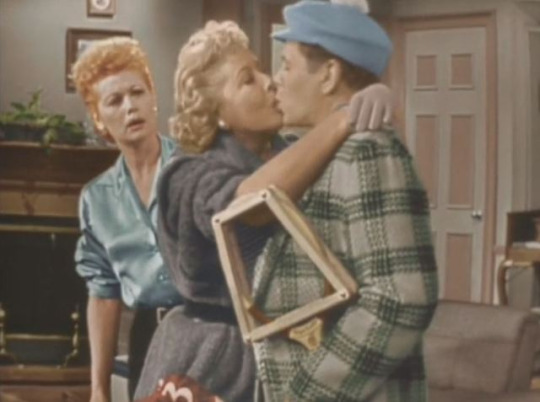
The sketch featured the entire cast of "I Love Lucy" and was performed in what appeared to be the Ricardo living room. The premise: Hope wondered what "I Love Lucy" would have been like had he married Lucille instead of Desi. With Bob as Ricky, Desi is recast as Fred Mertz. Naturally, this case of multiple recasting is as hilarious as it is fascinating.
#Lucille Ball#Recasting#I Love Lucy#The Lucy Show#Here's Lucy#Desi Arnaz#Vivian Vance#TV#sitcoms#Bob Hope#Lucie Arnaz#Little Ricky#Allen Oppenheimer#John Gabriel#Norman Leavitt#Cliff Norton#Tol Avery#Will Wright#Paula Winslowe#Barbara Pepper#Elvia Allman#Richard Deacon#Kasey Rogers#Pat Priest#Reta Shaw#Dick Sargent#Sandra Gould#Jerry Hausner#Paul Debov#Ted Eccles
5 notes
·
View notes
Video
youtube
The Fabulous Mr. Tweedy (1946) is a forgotten old radio comedy which is well above average.
This episode has an excellent cast: Frank Morgan, Harry Von Zell, Eddie Green, Gale Gordon, Richard Crenna, and Janet Waldo with Jerry Hausner as a dog.
A wacky, zany comedy and a treat for any OTR fan.
14 notes
·
View notes
Text
“New-To-Me” - July 2023
The Ladies Man (1961, Jerry Lewis)
Dreams (1990, Akira Kurosawa)
Seconds (1966, John Frankenheimer)
Torso (1973, Sergio Martino)
R100 (2013, Hitoshi Matsumoto)
Hotel (2004, Jessica Hausner)
Close Encounters of the Third Kind (1977, Steven Spielberg)
The Idiots (1998, Lars von Trier)
+++
His Girl Friday (1940, Howard Hawks)
ivans xtc. (2000, Bernard Rose)
The Sopranos [Full Series] (1999-2007, David Chase)
The White Ribbon (2009, Michael Haneke)
New Releases:
Barbie (Greta Gerwig)
The First Slam Dunk (Takehiko Inoue)
John Early: Now More Than Ever (Emily Allan & Leah Hennessey)
Mission: Impossible – Dead Reckoning Part One (Christopher McQuarrie)
Oppenheimer (Christopher Nolan)
Pacifiction (Albert Serra)
Shin Kamen Rider (Hideaki Anno)
The Stroll (Zackary Drucker & Kristen Parker Lovell)
Talk to Me (Michael Philippou & Danny Philippou)
3 notes
·
View notes
Photo
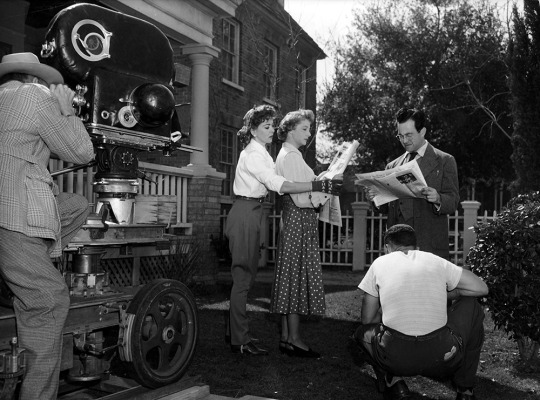
Ida Lupino directs sister Rita Lupino and Jerry Hausner on the set of OUTRAGE ('50)
57 notes
·
View notes
Text
How To Download Paths of Glory online
Paths of Glory movie download
Actors:
Richard Anderson
Jerry Hausner
Ralph Meeker
Christiane Kubrick
George Macready
Wayne Morris
Joe Turkel
Adolphe Menjou
Kirk Douglas
Download Paths of Glory
Paths of Glory (1957) - IMDb With Kirk Douglas, Ralph Meeker, Adolphe Menjou, George Macready. based on the novel of the same name by Humphrey Cobb. When soldiers in WW1 refuse to continue with an impossible attack, their superiors decide to make an example of them. Paths of Glory (1957) Paths of Glory (1957) is a masterful, unsentimental, classic anti-war film about World War I. Amazon.com: Paths of Glory: Kirk Douglas, Ralph Meeker, Adolphe. When soldiers in WW1 refuse to continue with an impossible attack, their superiors decide to make an. Carthage, Successors (2nd Edition), and For the People, Paths of Glory is the latest game to utilize an. Paths of Glory: Facts, Discussion Forum, and Encyclopedia Article Paths of Glory is a 1957 American anti-war film. Set during World War I Paths Of Glory | Free Music, Tour Dates, Photos, Videos Paths Of Glory's official profile including the latest music, albums, songs, music videos and more updates.. Stanley Kubrick had already made his talent known with the outstanding racetrack heist thriller The Killing , but it was the 1957 antiwar masterpiece Paths of Glory. Paths of Glory (1957) With Kirk Douglas, Ralph Meeker, Adolphe Menjou. Paths of Glory - Wikipedia, the free encyclopedia Paths of Glory is a 1957 American anti-war film by Stanley Kubrick based on the novel of the same name by Humphrey Cobb Set during World War I, the film stars Kirk Douglas as. Amazon.com: Paths of Glory (The Criterion. Stanley Kubrick had already made his talent known with the outstanding racetrack heist thriller The Killing , but it was the 1957 antiwar masterpiece Paths of Glory. Paths of Glory | Board Game | BoardGameGeek Following in the footsteps of We the People, Hannibal: Rome vs. Paths of Glory: Information from Answers.com Plot Adapting Humphrey Cobb's novel to the screen, director Stanley Kubrick and his collaborators Calder Willingham and Jim Thompson set out to make a devastating. It was 28 year-old Stanley Kubrick's fourth feature-length film. by Stanley Kubrick
divx Xena: Warrior Princess - Season One
Turistas movie
#Paths of Glory#Richard Anderson#Jerry Hausner#Ralph Meeker#Christiane Kubrick#George Macready#Wayne Morris#Joe Turkel#Adolphe Menjou#Kirk Douglas
0 notes